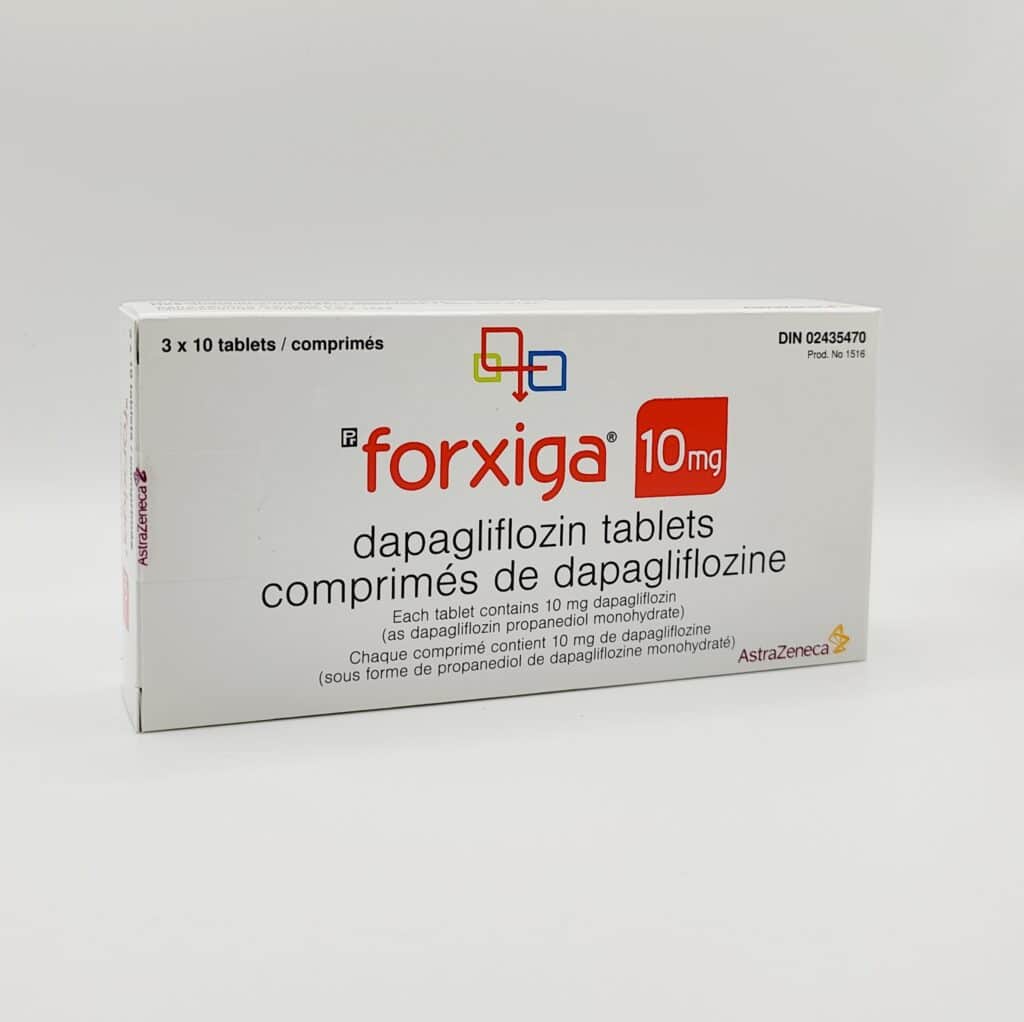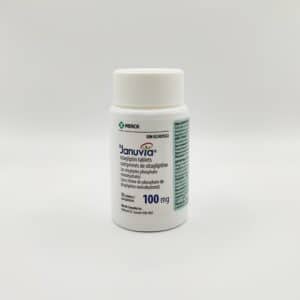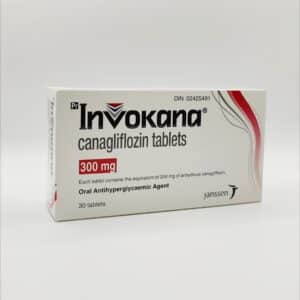Farxiga (Dapagliflozin)

Farxiga (Dapagliflozin)
Dapagliflozin Propanediol Monohydrate
Product information
Farxiga (dapagliflozin) is a medication primarily used for managing type 2 diabetes, and it also treats heart failure and chronic kidney disease. It functions as a sodium-glucose co-transporter-2 (SGLT-2) inhibitor, which helps in removing sugar from the body via urine.
RX Required
Product options
Farxiga (Dapagliflozin): Uses, Dosing, Side Effects & How It Works
Farxiga (dapagliflozin) is an oral SGLT2 inhibitor used in adults to improve blood sugar control in type 2 diabetes. It is also used to help reduce the risk of hospitalization for heart failure and to protect kidney function in chronic kidney disease (CKD).
What Farxiga Is Used For
- Type 2 diabetes (T2DM): Lowers blood glucose, usually alongside diet and exercise.
- Heart failure (HF): Helps reduce the risk of HF-related hospitalization.
- Chronic kidney disease (CKD): Supports kidney protection and slows disease progression in appropriate patients.
For full Canadian prescribing information, refer to the Forxiga (dapagliflozin) Product Monograph (AstraZeneca Canada).
Dosing (General Information)
- T2DM: Start 5 mg once daily; if tolerated and more control is needed, increase to 10 mg once daily.
- HF & CKD risk reduction: 10 mg once daily.
- Administration: Take once daily, with or without food; swallow tablets whole at about the same time each day.
- Missed dose: Take it when remembered; if it’s near the next dose, skip—do not double.
Renal / Special Populations
Efficacy declines with significant kidney impairment. Your prescriber will assess kidney function before and during therapy, and advise on suitability if eGFR is reduced.
Common Side Effects & Key Safety
- Genital/urinary infections (e.g., yeast infections, urinary tract infections)
- Increased urination, thirst, or mild dehydration
- Rare diabetic ketoacidosis (DKA)—seek care for nausea, vomiting, abdominal pain, unusual fatigue, or rapid breathing
- Low blood sugar if combined with insulin or sulfonylureas (your prescriber may adjust those medications)
Who Should Not Use Farxiga
- Patients on dialysis
- Pregnancy and breastfeeding: Do not use; discontinue if pregnancy is detected. Avoid during nursing unless your prescriber advises otherwise.
- Allergy to dapagliflozin or any tablet ingredient
How Farxiga Works
Dapagliflozin blocks the sodium–glucose co-transporter 2 (SGLT2) in the kidneys, causing glucose to be excreted in urine. This helps lower blood sugar and may modestly reduce body weight and blood pressure. Benefits in heart failure and kidney disease extend beyond glucose control.
Farxiga vs. Jardiance (Empagliflozin)
Farxiga (dapagliflozin) and Jardiance (empagliflozin) are both SGLT2 inhibitors used in adults with type 2 diabetes, and for heart and kidney protection in appropriate patients. They are taken once daily and share many benefits and side effects, but there are practical differences to discuss with your prescriber:
- Indications & goals: Both improve A1C and support heart/kidney outcomes. Your prescriber may favor one based on your cardiovascular history, CKD stage, and treatment goals.
- Dosing & convenience: Typically once daily with or without food. Choice often comes down to clinical fit, price, and prior response.
- Side effects: Class effects (genital yeast infections, increased urination, rare euglycemic DKA) are similar. Prior frequent yeast infections or recurrent UTIs may influence selection.
- Kidney function: Efficacy for glucose lowering declines with reduced eGFR; thresholds for starting/continuing can vary by drug and guideline—your prescriber will advise.
- Cost & access: If U.S. prices are high, Americans often look to Canadian prescription referral services for brand or generic options to lower out-of-pocket costs.
Bottom line: both are strong options. The “best” choice depends on your health history, eGFR, other medications, and affordability.
Everyday Tips While Taking Farxiga
- Hydration matters: Farxiga increases urination. Drink water regularly, especially in hot weather or when exercising, to reduce dizziness and dehydration risk.
- Sick-day plan: If you have vomiting, cannot keep fluids down, or face major surgery/fasting, ask your care team about temporarily pausing Farxiga to lower rare DKA risk, and when to restart.
- Avoid extreme low-carb without guidance: Very low-carb/ketogenic diets may raise euglycemic DKA risk on SGLT2s—discuss diet plans with your prescriber first.
- Prevent yeast infections: Keep the genital area dry, change out of damp clothes promptly, consider breathable fabrics, and contact your clinician early if symptoms appear.
- Watch combo meds: When used with insulin or a sulfonylurea, your prescriber may lower those doses to reduce hypoglycemia risk.
- Alcohol in moderation: Heavy drinking can increase dehydration and DKA risk; ask about safe limits for you.
- Travel & storage: Store tablets at room temperature in a dry place; keep in original packaging for security screenings and medication identification.
Lower Your Cost (For U.S. Patients)
If Farxiga is costly locally, Americans can order brand or generic from Canada with a valid U.S. prescription. Current pricing:
- Brand Farxiga: 5 mg – $119 (30 tabs); 10 mg – $130 (30 tabs)
- Generic dapagliflozin: 5 mg or 10 mg – $32.99 (30 tabs); $94.44 (90 tabs)
- Shipping to U.S.: typically 5–10 business days after processing
How to Buy from Canada (Step-by-Step)
- Get a valid U.S. prescription for Farxiga (dapagliflozin).
- Send your prescription: Your clinic can fax to 1-833-209-3704, or you can upload your prescription.
- Choose brand or generic and the strength (5 mg or 10 mg).
- Apply any coupons at checkout if available.
- Delivery: U.S. shipping usually 5–10 business days, up to a 90-day personal-use supply.
When to Seek Medical Help
- Symptoms suggestive of DKA (nausea, vomiting, abdominal pain, unusual fatigue, rapid breathing)
- Signs of severe dehydration or acute illness
- Any severe or unusual symptoms
Ready to Order?
Buy Farxiga (dapagliflozin) from Canada
Legal and Safety Information
Content is educational and not a substitute for medical advice. Medications sourced via Canadian prescription referral services are intended for personal use by U.S. patients with a valid prescription. Follow your prescriber’s instructions and local regulations.





